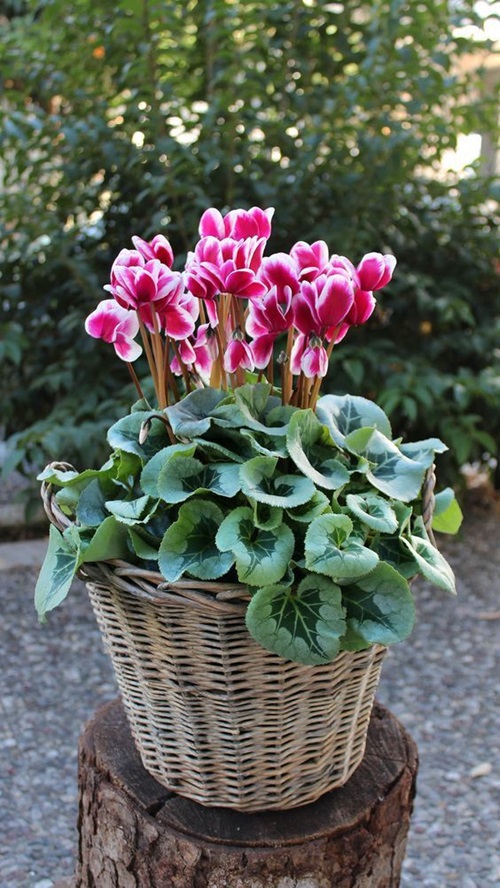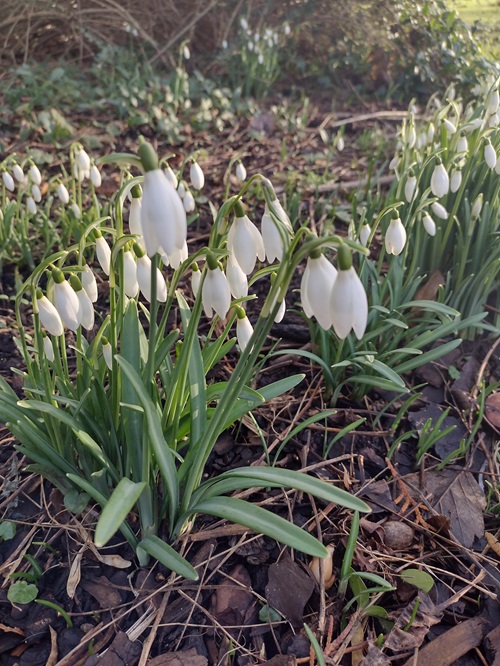Most gardens go bare by the end of the year, but these Late Blooming Flowers will keep your garden alive through December and beyond!
Just when you think your garden’s ready to hibernate, the cold brings a warm surprise to your winter garden! A handful of bold flowers refuse to call it quits, keeping your home garden alive through frosty weather—here are late-blooming flowers for December and beyond!
Late Blooming Flowers for December
1. Winter Pansies
Botanical Name: Viola tricolor
USDA Zones: 2–9
Pansies and violas add much color to winter gardens when all else fades. While ice pansies bloom continuously in zones 6-8 and above through the fall into winter and beyond, they often go dormant in colder regions.
However, if growing indoors or in space outdoors in containers, several varieties will flourish, pushing out their happy blue, red, yellow, purple, and white faces under full sun through December and beyond. They also love well-draining soil rich in organic matter.
2. Winter Jasmine
Botanical Name: Jasminum nudiflorum
USDA Zones: 6–10
Winter jasmine usually begins blooming from late November all through the winter, with bright yellow flowers that emerge even before the plant’s foliage! The plant needs a bit of space to grow up to 4 feet, but it can reach as much as 15 feet when grown as a vine.
It is not very picky about its sunlight needs and can grow in full sun and heavy shade; however, flowering will be less in more shade.
3. Cyclamen
Botanical Name: Cyclamen persicum
USDA Zones: 9–11
Cyclamen is a blessing to an indoor gardener in winter! It blooms late in the year, with flowers lasting from December to early spring. This perennial is compact, barely reaching 9 inches in height, making it well-suited to small gardens.
With pink, red, or white petals and heart-shaped leaves, cyclamens are sensitive to frost, so grow them indoors if your region experiences icy winters.
4. Christmas Roses
Botanical Name: Helleborus niger
USDA Zones: 3–8
Christmas roses are unique flowers that bloom in late fall and continue to spread their beauty through December, especially around Christmas. Due to the dark color of their roots, they are also known as black hellebores.
The blossoms, however, are colorful, many are creamy-white with a soft, waxy texture. These plants reach a height of 1 foot and are perfect choices to border your pathways during the winter season.
5. Snowdrop

Botanical Name: Galanthus elwesii
USDA Zones: 4–7
Snowdrops are named so because their blooms mimic the shape of frozen water droplets. The timing of their flowering is also apt as they emerge late in winter. Frost or low temperatures don’t seem to bother them.
The best place to plant snowdrops is in moist, well-drained, fertile soils under deciduous trees. The trees will lose their leaves in the winter, allowing maximum sunlight exposure. In warm summer days, the trees also protect snowdrops from direct rays.
6. Autumn Crocus

Botanical Name: Colchicum
USDA Zones: 4–8
Autumn crocus is renowned for blooming in the fall, but certain species postpone the blooming to later in the year and continue until spring. The flowers are lavender-purple, large, and cup-shaped, contrasting chilly, barren terrains.
They grow best from bulbs in moist, well-draining soil. While they flourish in regions with mild winters, they cannot survive temperatures below 41 F (5 C).
Note: These plants are highly toxic due to the presence of alkaloid colchicine and can lead to fatalities if ingested.
7. Fall Daffodil
Botanical Name: Sternbergia lutea
USDA Zones: 7–10
Fall daffodils have golden yellow or white cup-shaped flowers, which later open to a more star-like form. They usually bloom in the fall season, but they wait for the weather to cool down even more in warmer regions, blooming in December.
These flowers are often confused with crocus but are not toxic. The bulbs thrive in gritty soil under full sun.
8. Camellia

Botanical Name: Camellia japonica
USDA Zones: 6–9
Camellias can be spotted by their large, rose-like flowers, usually pink, red, white, or gold. These plants love shade more than the sun and are slow growers. They can live long if planted in well-draining soil and protected from strong winds, which dry out the plant.




